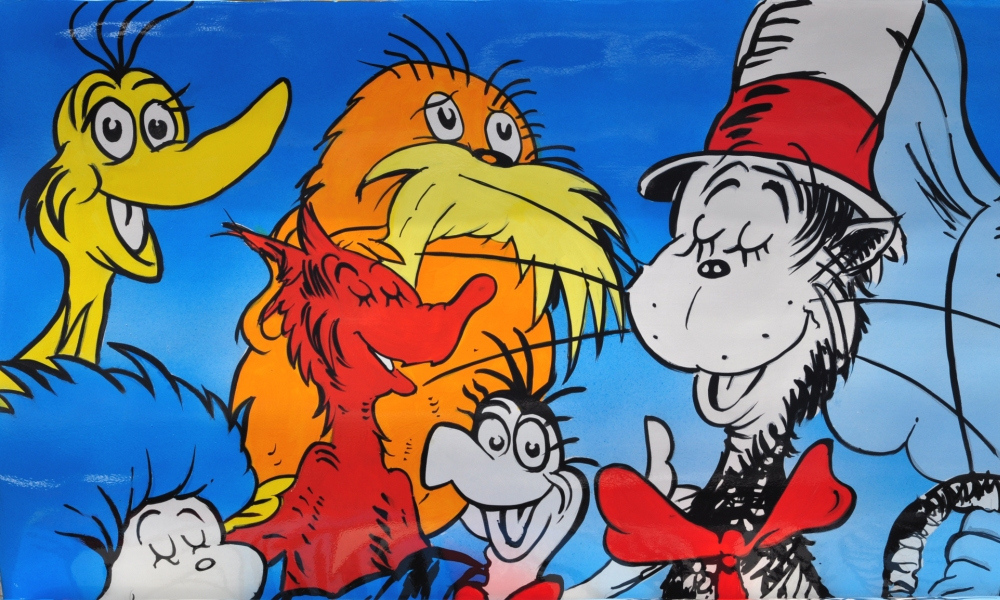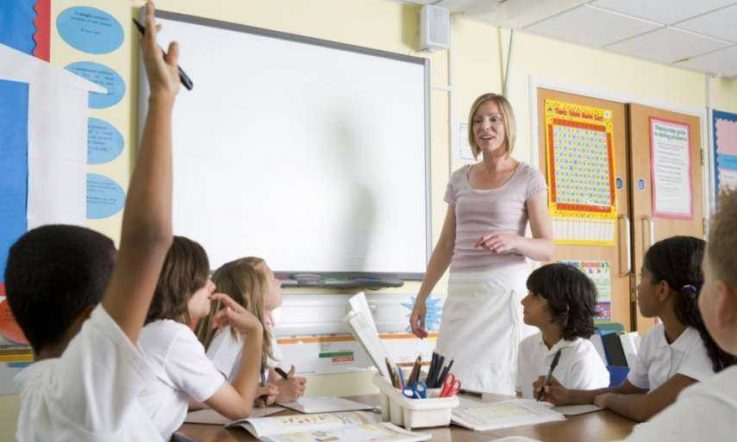There is an essence to each fine teacher that they bring to their teaching but it's not captured in accreditation or teacher registration competency tables, or in measurements of their impact on stipulated learning outcomes.
This two-part article considers the positive personal attributes that teachers need alongside their suite of accredited teacherly competencies, to bring a learner along, to motivate, to excite and to transform their view of themselves into capable, resilient and aspirational people. I use the works of Dr Seuss as my guide through two of these important personal attributes for teachers, as Dr Seuss seems to have got it right.
The stereotypic image of a teacher who lacks that certain flair to his teaching is Mr Uber Dork, the economics teacher in the 1986 film Ferris Bueller's Day Off. The character of Mr Dork is famous for his un-motivating questioning technique: ‘anyone, anyone?' Ben Stein hilariously portrayed Mr Dork's droning voice and lack of spark in the movie. If you don't recall Mr Dork, check out this clip.
This persona is, thankfully, rare in the actual teaching profession. However, a cold hard look at the requirements for demonstration of the Australian Professional Standards for Teaching (APST) at the Graduate level uncovers something rather alarming … Mr Dork, would probably/possibly have been deemed competent against the standards! Yet he is so clearly missing those personal attributes that serve to transform learners and help them to see themselves as capable, resilient and to foster high aspirations.
This issue of a need to capture those personal attributes of teachers alongside the elements of basic competence and effectiveness addressed in current national and jurisdictional accreditation and professional development requirements is discussed in a recent monograph (Bahr & Mellor, 2016). In these articles, we will unpack some of these personal positive attributes to show how teachers can develop and apply them to enhance learning.
The karma of Seuss
I have reached for my complete set of 40th anniversary Dr Seuss books to help me examine two positive personal attributes for teachers – humour and enthusiasm – that combine with the effectiveness competencies and contribute to a positive karma for teaching and learning. Why Seuss? Why not? To start this journey let's consider Seuss' starting position:
‘Today was good. Today was fun. Tomorrow is another one.
Every day, from here to there, funny things are everywhere.' (Seuss, 1960)
This is surely the excitement we desire from any learning journey and partnership between students and their teachers. This line from Seuss communicates a deep sense of satisfaction and fun from an experience with an enthusiasm for the next exciting instalment. I believe that this type of wonderment and delight should be the connecting thread for learning. Further, there is research that supports this view.
Part 1: Humour
There are many dimensions to humour in teaching and learning. The first is being of good humour. A good-humoured teacher conveys a sense of happiness, is quick to smile and find the funny in situations in a way that brings the teaching moment into focus. At the very heart of things they are showing that they enjoy the company of the learners and that they enjoy the learning process and material. The message is that they belong, and so do the learners. This is handy because belonging is an essential foundation for an orientation to learning (Bahr & Pendergast, 2007).
There hasn't been very much attention to the role of humour in teaching and learning in recent times. To find the frayed end of the thread of research literature we need to return to the 1990s. Comprehensive research at that time has shown that positive humour minimises anxiety (Metcalf, 1990), is associated with information retention and recall (Graham, Papa, & Brooks, 1992), and that humour and accomplishment are linked (Smith, 1990). That is, humour can create a positive environment for learning. Student behaviour can also be controlled with humour in ways that avoid injecting a draconian and frigid climate into classrooms (Stebbins, 1980). But, more than this, humour serves a purpose to bond people together and to that being learnt (Metcalf, 1990).
A rare recent study by Schultz, O'Brien, and Schultz (2016) has reflected on the body of literature that considered the purpose of humour in learning to inform a new pilot study on the direct effects of the use of humour by a teacher on student short- to mid-term learning outcomes. They specifically investigated the use of humour to create an air of levity for the learning. Teachers used jokes, cartoons, and funny stories in their engagement with the students, but did not use the humour in a way that was directly related to the material to be learned. The research team found that, in these circumstances, students were very positively disposed to the learning but actually did not show stronger learning outcomes than the control group that enjoyed none of the levity. Retention in the program by those in the class that experienced greater humour was much better though, and the students reported their experience as learners very positively.
So, if you want to retain student interest in subjects, then make the learning environment light. However, the findings of Schultz and team suggest that just having humour in the classroom does not tick all of the boxes. Typically we don't just want the students happy to come along; we want their learning to be enhanced as well. Carefully managed humour can make an impact here as well. That is, humour needs to be connected directly to the things to be learned.
Graham, Papa and Brooks argued that humour can indeed increase the conceptual understanding and achievement of students, but the funny must be directly linked to the concepts to be learned. In this way the episodic memory of the students is tagged with a memorable event which can improve their recall, but note, not necessarily their conceptual understanding (Graham, Papa & Brooks, 1992). Very recent research in this area, also rare, has focused on the limits to the positive effects of humour on learning. Hu, Lefton and Ludovice (2016) warn that students may flounder in a sea of increased cognitive load if humour is used with the introduction and complex concepts. So, care is needed.
A word of warning
Remember that humour is finely culturally inscribed (lharthi, 2016). That is, what is funny to you may not be funny to me. In fact, what might be funny to you might be distasteful to me. Clearly disparaging humour, personal digs, pranks and so forth would have no place in any attempt at positive humour to enhance learning. But something that might seem rather benign to the teacher may not be understood or happily received by some students. It is easy to check after the fact … were the students laughing? Before the fact though, the choice of humour needs to take careful account of the background, development, personal circumstances and values of the student cohort. That is, a teacher's professional knowledge needs to be brought to the engagement.
So what does Dr Seuss say about humour? Well, Seuss, in a publication not directed for child readers, argued that humour can help us to cognitively engage in his statement that ‘Nonsense wakes up the brain cells. And it helps develop a sense of humor, which is awfully important in this day and age.' (The waking times, 2016). Some have even tried to channel Seuss in their presentation of technical information to help make conceptual understanding more memorable. For example, here's an excerpt of a technical manual in the style of Dr Seuss by Gene Ziegler (1995):
‘If a packet hits a pocket on a socket on a port,
And the bus is interrupted as a very last resort,
and the address of the memory makes your floppy disk abort,
Then the socket packet pocket has an error to report!'
But the humour you use as a teacher needs to be yours, and in this Dr Seuss agrees:
‘Today you are You, that is truer than true.
There is no one alive who is Youer than You.' (Seuss, 1959)
In sum, teachers do well to be of good humour. In general the use of humour is useful for creating a positive learning environment. However, to ensure the humour is linked to enhanced achievement the funny being brought by the teacher needs to be connected to the concepts to be learnt, and used in a way that doesn't cloud complex ideas. Thus the effective use of humour for teachers is quite a professional skill, or suite of skills. I suggest that the skills are best learnt alongside the development of teacherly competencies and demonstration of professional standards for teachers and are honed and practiced with real learners. That is, initial teacher education certainly has a place.
Stay tuned for Part 2 tomorrow, when Professor Nan Bahr returns to the books of Dr Seuss to explore another important personal attribute for teachers – enthusiasm.
References
Bahr, N., & Pendergast, D., (2007). The Millennial Adolescent. ACER Press, 2007. Camberwell, Vic.
Bahr, N., & Mellor, S., (2016). Building quality in teaching and teacher education. Australian Council for Educational Research (ACER) Melbourne Vic.
Graham, E., Papa, M., & Brooks, G. (1992). Function of humour in conversation and measurement. Western Journal of Communication, 56, 161-183
Hu, D.L., Lefton, L., & Ludovice, P.J. (2016). Humour Applied to STEM Education. Systems Research and Behavioral Science.
lharthi, A. (2016). Humour and culture. International Journal of Humanities and Cultural Studies, 1(3), 119-130.
Metcalf, C.W. (1990). Humour, risk and change. American Media, Inc., Des Moines, IA.
Schultz, J.T., O'Brien, S.B., & Marian C. Schultz, M.C. (2016). A Pilot Study to Assess the Effects of Humor in Relationship to Teaching Effectiveness.
Seuss, G. (1959). Happy Birthday to You. Random House Books for Young Readers, New York.
Seuss, G. (1960). One fish, two fish, red fish, blue fish. Random House Books for Young Readers, New York.
Smith, D. (1990). No laughing matter. Training, pp. 85-86.
Stebbins, R.A. (1980). The role of humour in teaching: strategy and self expression. In P. Woods (Ed). Teacher strategies: explorations in the sociology of the school. Croom Helm, London.
The waking times (2016). The Power of Nonsense – How Laughter Makes Life Better. Accessed from: http://www.wakingtimes.com/2013/05/24/thepower-of-nonsense-how-laughter-makes-life-better/
Ziegler, G. (1995). What if Dr Seuss did technical writing? MIT. Accessed at: http://web.mit.edu/adorai/www/seuss-technical-writing.html
In what ways do you use humour in your classroom to create a positive learning environment?
How do you ensure that the humour used in your classroom is directly linked to the lessons outcomes?



